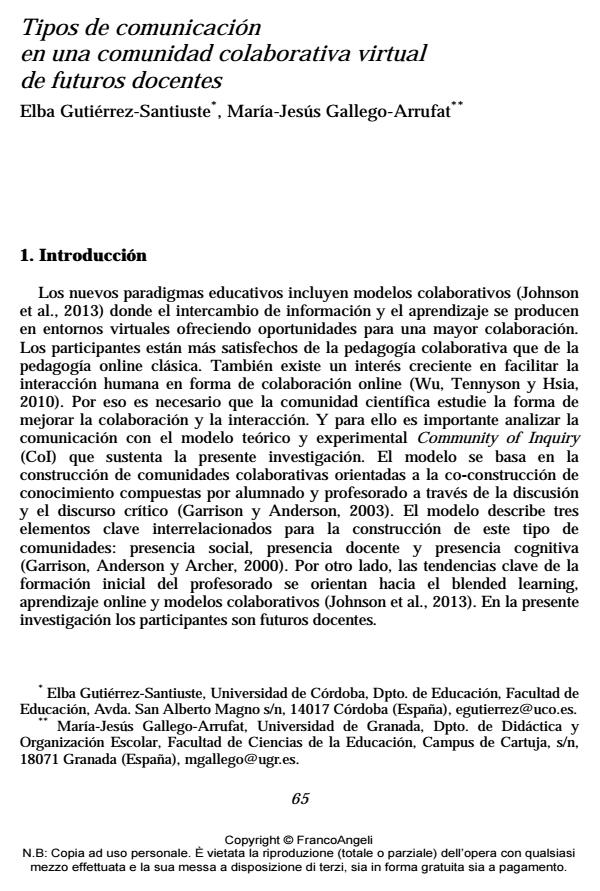Tipos de comunicación en una comunidad colaborativa virtual de futuros docentes
Titolo Rivista CADMO
Autori/Curatori Elba Gutiérrez-Santiuste, María-Jesús Gallego-Arrufat
Anno di pubblicazione 2016 Fascicolo 2015/2
Lingua Italiano Numero pagine 16 P. 65-80 Dimensione file 88 KB
DOI 10.3280/CAD2015-002007
Il DOI è il codice a barre della proprietà intellettuale: per saperne di più
clicca qui
Qui sotto puoi vedere in anteprima la prima pagina di questo articolo.
Se questo articolo ti interessa, lo puoi acquistare (e scaricare in formato pdf) seguendo le facili indicazioni per acquistare il download credit. Acquista Download Credits per scaricare questo Articolo in formato PDF

FrancoAngeli è membro della Publishers International Linking Association, Inc (PILA)associazione indipendente e non profit per facilitare (attraverso i servizi tecnologici implementati da CrossRef.org) l’accesso degli studiosi ai contenuti digitali nelle pubblicazioni professionali e scientifiche
Communication is studied in a virtual collaborative community of future teachers. The participants collaborate in a virtual learning environment in higher education. The main theme of this article is computer-mediated communication and the analysis of the three most used communication tools (chats, forums and emails). The different types of communication (social presence, cognitive presence, teaching presence) and the perception of the future teacher on them are exposed in the article. The results show differences in the elements analyzed for the communication tool which is used. The analysis of communication in virtual collaborative environments is a promising line of research to contribute improving the initial training of teachers and therefore improving education.
Parole chiave:Collaborative community of inquiry, computer-mediated communication, social presence, cognitive presence, teaching presence.
- Las competencias del profesorado de educación física. Un estudio del modelo formativo José Luis Aparicio-Herguedas, Jairo Rodríguez-Medina, Antonio Fraile-Aranda, in CADMO 2/2022 pp.21
DOI: 10.3280/CAD2021-002003
Elba Gutiérrez-Santiuste, María-Jesús Gallego-Arrufat, Tipos de comunicación en una comunidad colaborativa virtual de futuros docentes in "CADMO" 2/2015, pp 65-80, DOI: 10.3280/CAD2015-002007